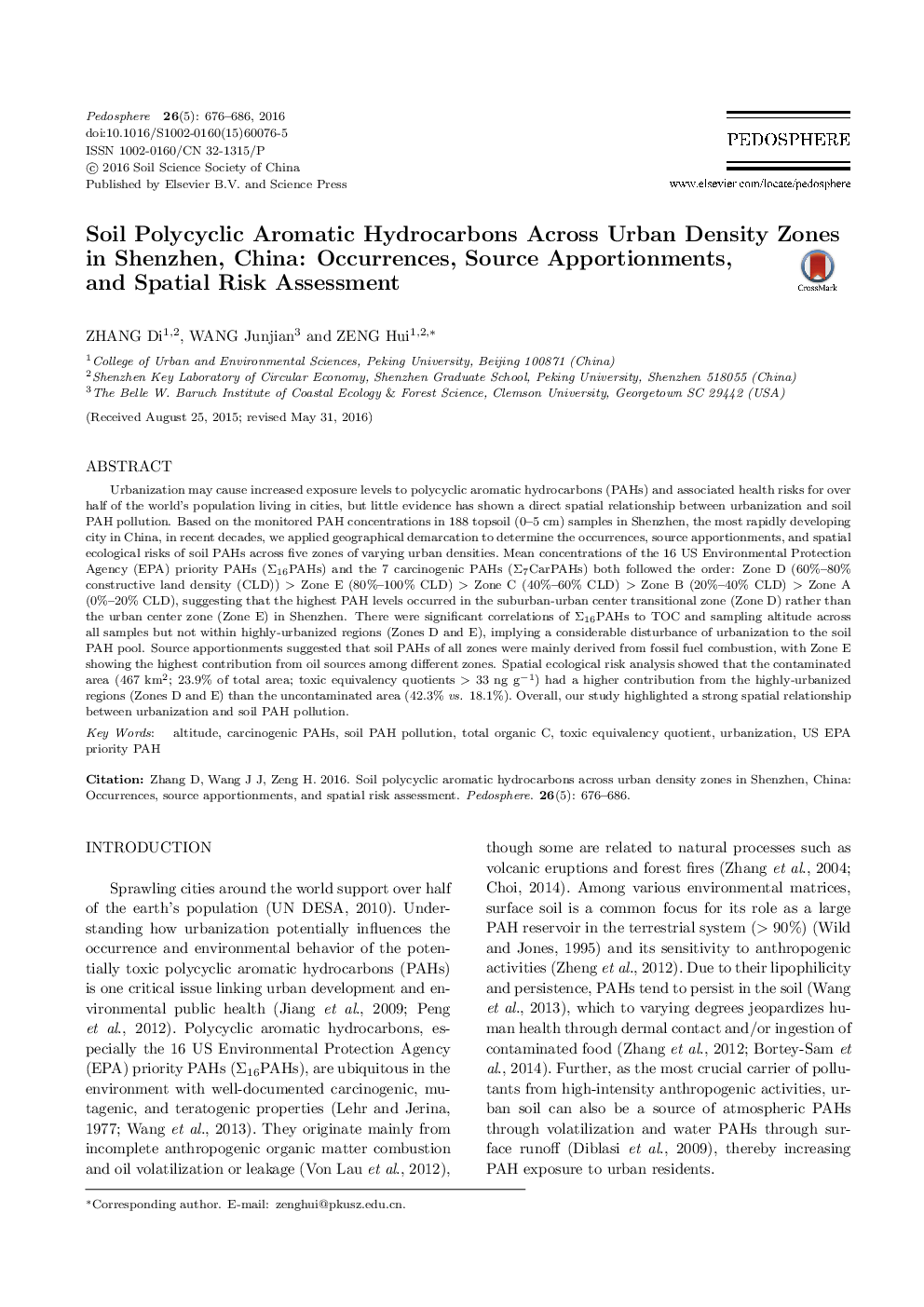| کد مقاله | کد نشریه | سال انتشار | مقاله انگلیسی | نسخه تمام متن |
|---|---|---|---|---|
| 4581162 | 1333685 | 2016 | 11 صفحه PDF | دانلود رایگان |
Urbanization may cause increased exposure levels to polycyclic aromatic hydrocarbons (PAHs) and associated health risks for over half of the world's population living in cities, but little evidence has shown a direct spatial relationship between urbanization and soil PAH pollution. Based on the monitored PAH concentrations in 188 topsoil (0–5 cm) samples in Shenzhen, the most rapidly developing city in China, in recent decades, we applied geographical demarcation to determine the occurrences, source apportionments, and spatial ecological risks of soil PAHs across five zones of varying urban densities. Mean concentrations of the 16 US Environmental Protection Agency (EPA) priority PAHs (∑16PAHs) and the 7 carcinogenic PAHs (∑7CarPAHs) both followed the order: Zone D (60%–80% constructive land density (CLD)) > Zone E (80%–100% CLD) > Zone C (40%–60% CLD) > Zone B (20%–40% CLD) > Zone A (0%–20% CLD), suggesting that the highest PAH levels occurred in the suburban-urban center transitional zone (Zone D) rather than the urban center zone (Zone E) in Shenzhen. There were significant correlations of ∑16PAHs to TOC and sampling altitude across all samples but not within highly-urbanized regions (Zones D and E), implying a considerable disturbance of urbanization to the soil PAH pool. Source apportionments suggested that soil PAHs of all zones were mainly derived from fossil fuel combustion, with Zone E showing the highest contribution from oil sources among different zones. Spatial ecological risk analysis showed that the contaminated area (467 km2; 23.9% of total area; toxic equivalency quotients > 33 ng g−1) had a higher contribution from the highly-urbanized regions (Zones D and E) than the uncontaminated area (42.3% vs. 18.1%). Overall, our study highlighted a strong spatial relationship between urbanization and soil PAH pollution.
Journal: Pedosphere - Volume 26, Issue 5, October 2016, Pages 676–686
